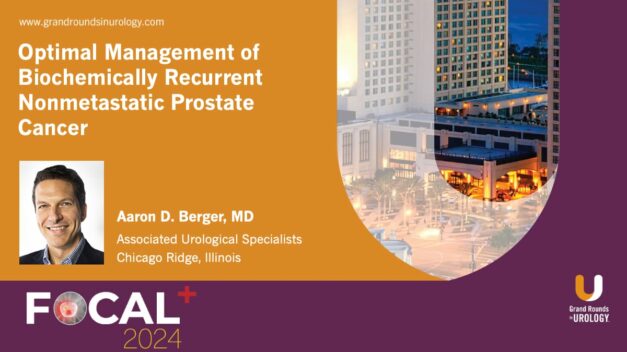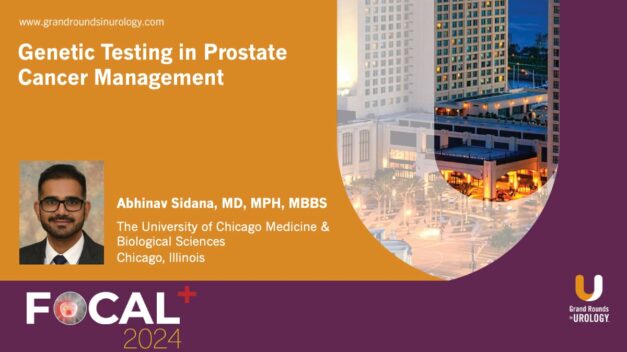Optimal Management of Biochemically Recurrent Nonmetastatic Prostate Cancer
Aaron Berger, MD, delves into the evolving landscape of non-metastatic castration-sensitive prostate cancer (nmCSPC) and high-risk biochemical recurrence, focusing on diagnostic and therapeutic updates. In this 7-minute presentation, Dr. Berger emphasizes advanced imaging, particularly PSMA PET scans, as the diagnostic standard due to its superior sensitivity over conventional CT and bone scans.
Dr. Berger discusses treatment strategies, including salvage radiation therapy and the use of androgen deprivation therapy (ADT). For radiation-treated patients, focal salvage therapies, including cryoablation, HIFU, and electroporation, are discussed as options. The presentation underscores the shrinking non-metastatic space due to advancements in imaging technology that now frequently identify micrometastases.
Dr. Berger reinforces the importance of genetic testing and surveillance protocols involving regular PSA monitoring and imaging triggered by symptoms or PSA progression. He highlights the dynamic shifts in prostate cancer management, driven by improved diagnostics and the integration of advanced systemic therapies within an increasingly precise treatment paradigm.
Read More




